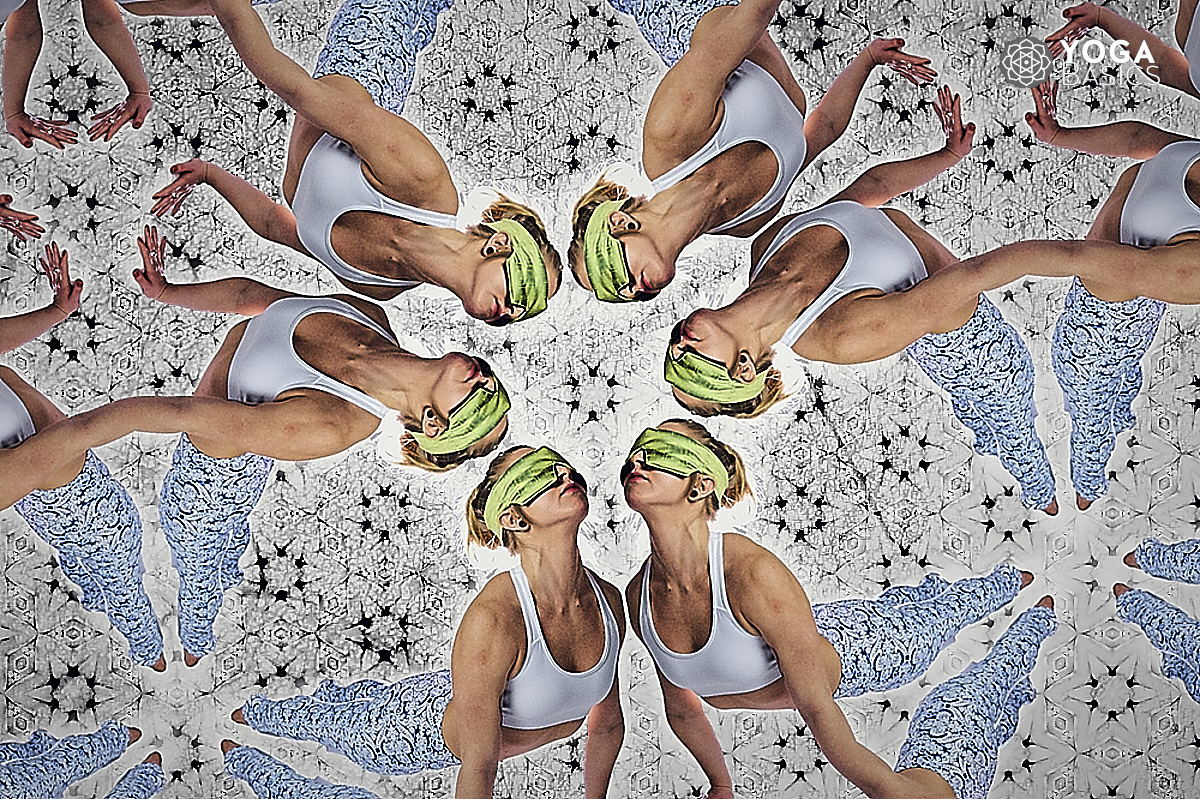Blindfolded yoga is just like your traditional yoga class, but with a bandana, eye mask or some other cover over your eyes. This unique practice has been rising in popularity and can be found at Wanderlust Festivals, yoga retreats, and in a few studios in New York and Australia. I was excited to try blindfolded yoga at a yoga retreat in Lake Tahoe, CA, but honestly wasn’t expecting the class to do much more than challenge my balance. To my surprise, that blindfolded yoga class was one of the most powerful yoga classes I have ever attended. But what makes blindfolded yoga so different than any other yoga class?
Blindfolded yoga increases body-awareness
I never realized how much I rely on my gaze in yoga until it was removed. Even when I practice with my eyes closed, I can still peek to make sure my knee is over my ankle. With blindfolded yoga, there’s no checking that your arms are in one straight line. You can’t look and see. You have to feel instead.
Vision plays an important role in helping us understand where our body is in space, but vision is not the only sensory system involved in body-awareness. Proprioception plays a huge roll as well. Receptors in our skin and muscles tell our brain where our body is and what it is doing. A healthy proprioceptive system is important for a high level of body-awareness, and, like most things, it gets stronger with practice. Practicing blindfolded yoga can help us strengthen our proprioception and grow more intimately connected with how our body feels and moves.
As we stepped from downward facing dog to high lunge, I realized how much of my body-awareness was dependent on my sight. The instructor told us to step one foot between our hands. After stepping my foot forward, I had to grope around with my hand to find where my foot had actually landed (which was quite a few inches beyond my hands and to the far right of the mat), then guide it back to the proper position. Once we were in high lunge, I began to shift around and explore my body from the inside out. Was my knee over my ankle? I couldn’t see, so I had to bend my knee and move my foot until I could feel where both were in space and how they related to each other. Suddenly, I realized that I was aware of my joints and the position of my body in a way I’d never experienced in a normal yoga class.
Blindfolded yoga teaches focus
If you had asked me before my blindfolded yoga class, I would have said I am usually very focused and present in yoga. But blindfolded yoga showed me just how much more focus I am capable of. Take tree pose. In a normal yoga class I can get into tree with little waver and stay there awhile. But once I donned the blindfold I was wavering and shaking and could hardly get my foot to my ankle without falling over. Besides giving my ego a healthy knock, inching my way into tree pose while blindfolded forced me to truly focus in a way I never have before. It demanded my presence. I needed to steady my breath; to feel the connection between my standing foot and the earth; to still the muscles of my standing leg and tighten my core; and to move slowly with a connection to my own stability and stillness.
Blindfolded yoga gives you the gift of pratyahara
The most powerful part of blindfolded yoga was the dampening of the senses, pratyahara. My lack of sight helped me connect with my body and find more focus in my practice. This awareness and focus brought a new depth to my practice. Ancient yogic philosophy teaches that pratyahara helps us to unify the mind, body, and spirit. During my blindfolded yoga practice, I saw a hint of that unification. Without the distractions that come from looking around the room, I was able to begin moving inward instead. I felt I could track the movement of the breath as it traveled through my body and when we settled into savasana, I dropped into a deeper stillness than I had ever known.
Something about being so aware of my body actually helped me get out of my body and connect with something deeper. The focus I cultivated during the practice pulled me deep into myself. When we settled into savasana, and there was no alignment or balance left to worry about, that focus transformed into stillness. I was so far from distraction by that point that it was easy to slip into a quiet calm and let the flow of thoughts and breath move through me while I remained comfortably steady in that place where thoughts and distraction stop and unity begins.
Blindfolded yoga helped me grow physically, mentally, and spiritually, and it is something I would recommend to any yogi looking for a little more depth in their yoga practice. It has yet to be offered at most studios and is mostly found at yoga retreats or festivals, but if you can’t find a blindfolded yoga class, you can still try it at home. Next time you get on the mat, try wrapping a blindfold around your eyes and see how this simple change makes a big difference in your practice.


















Leave a Reply